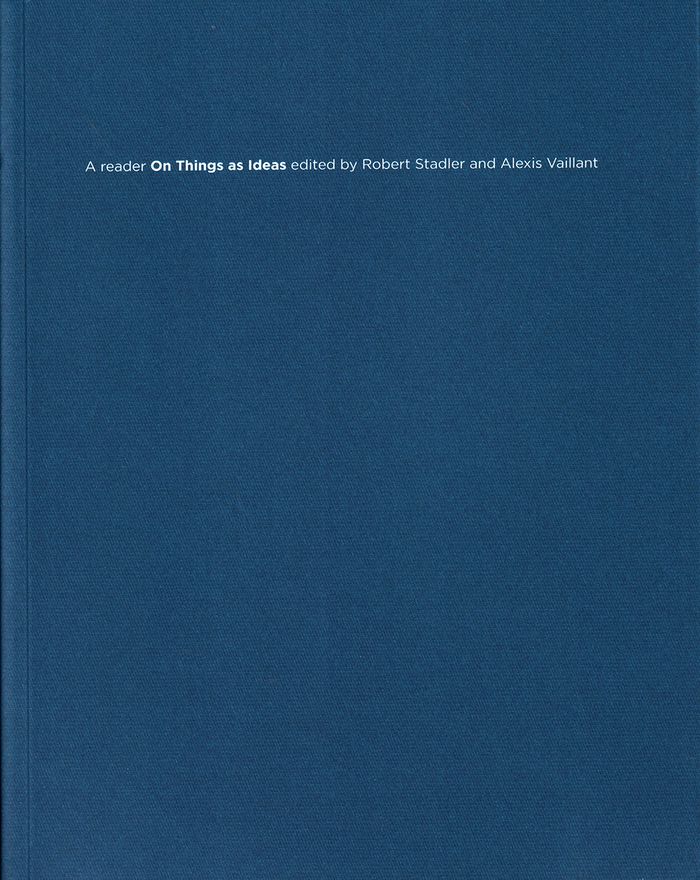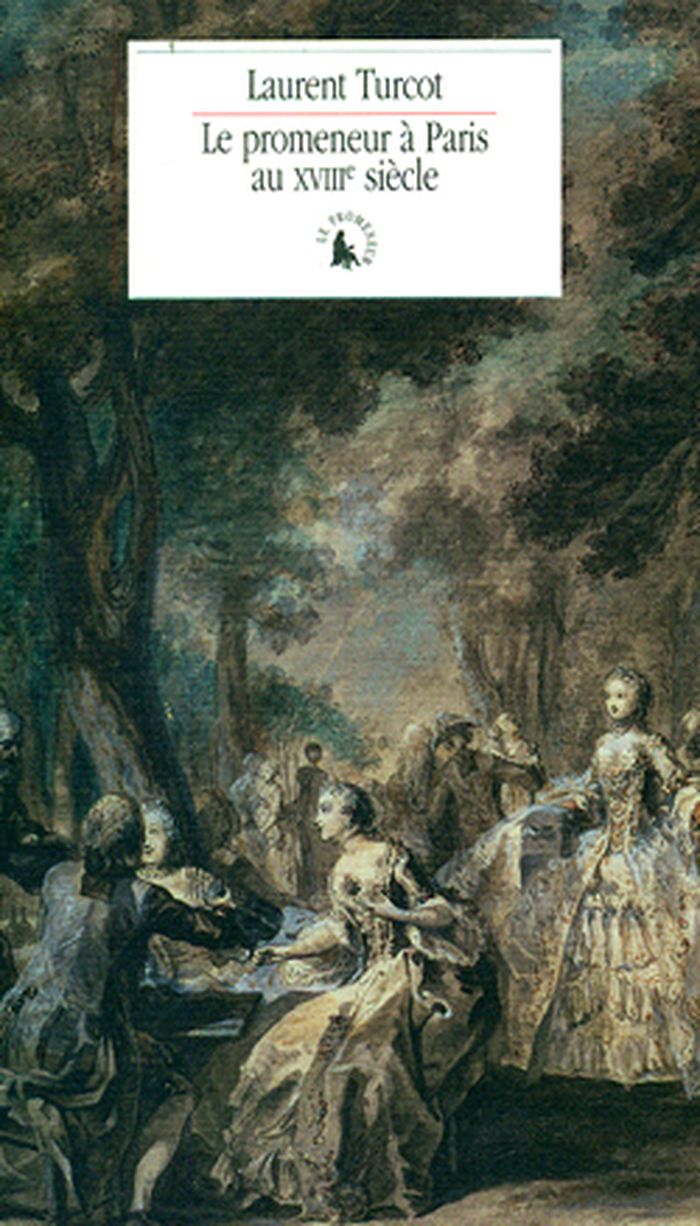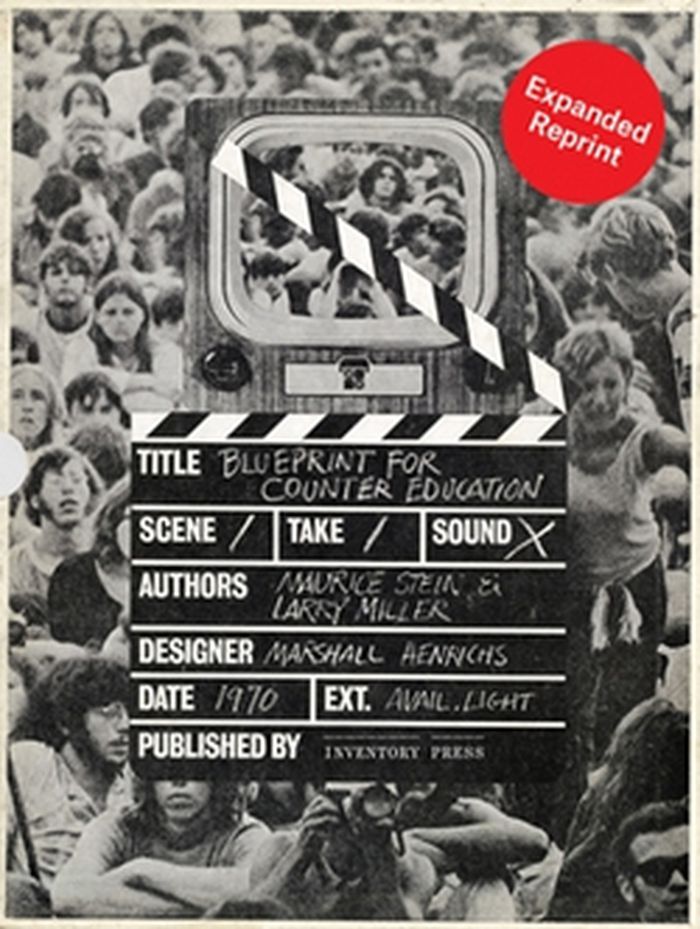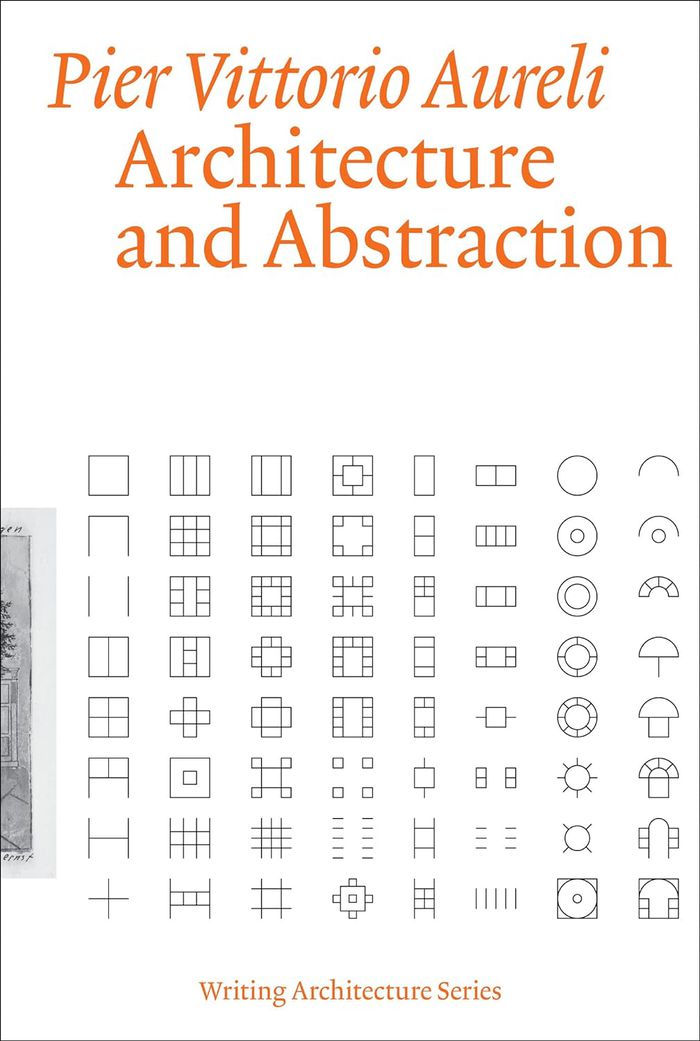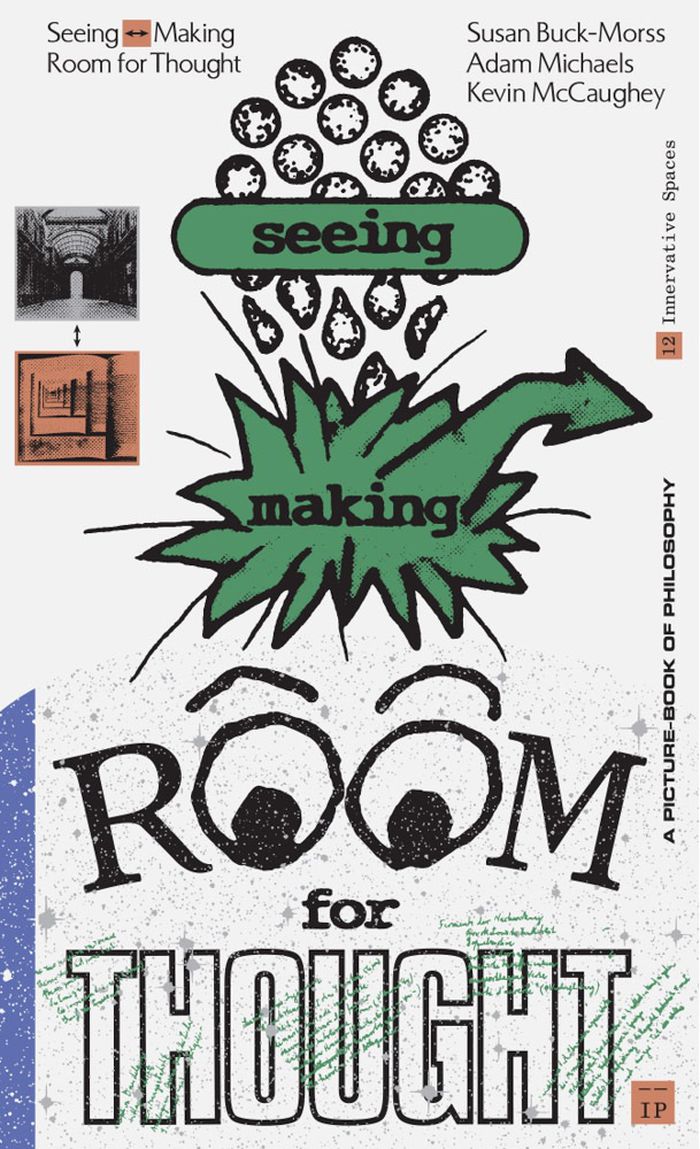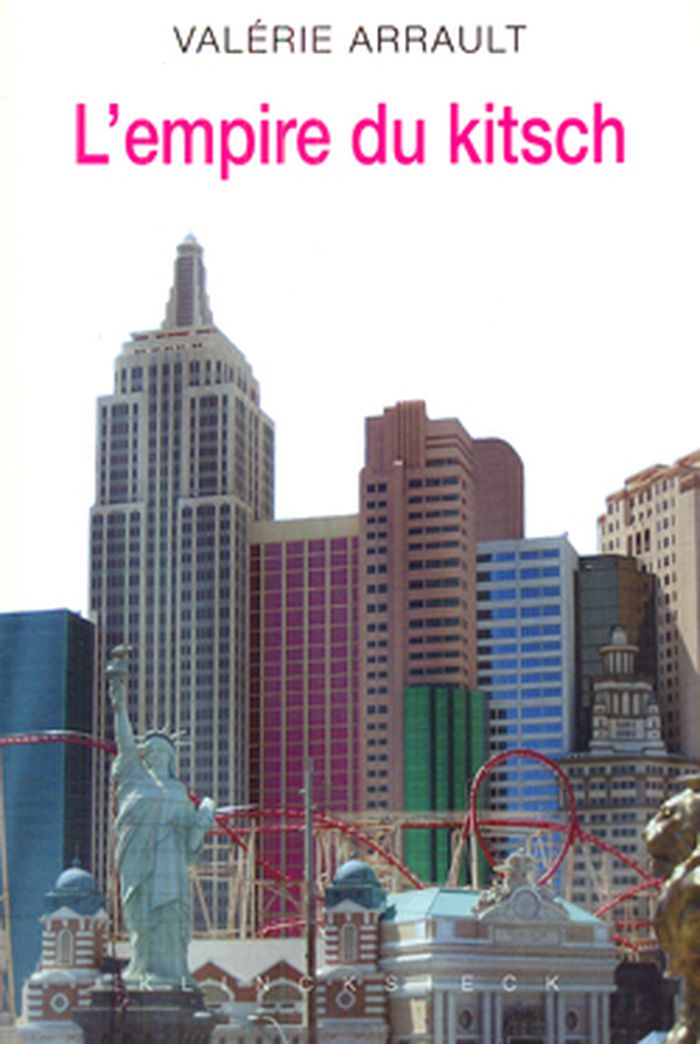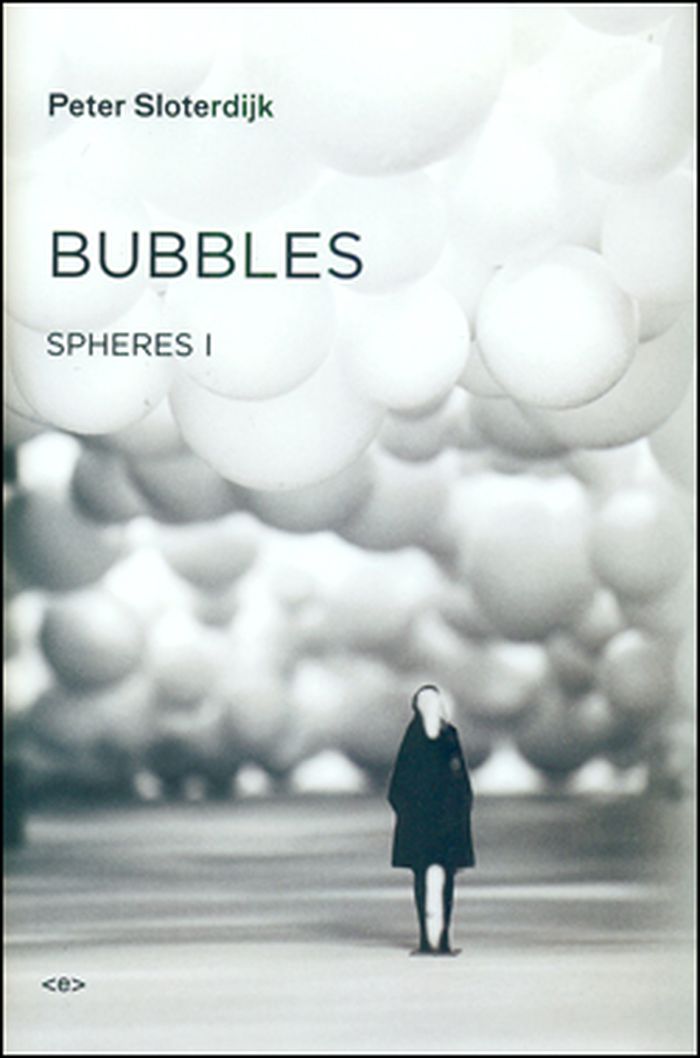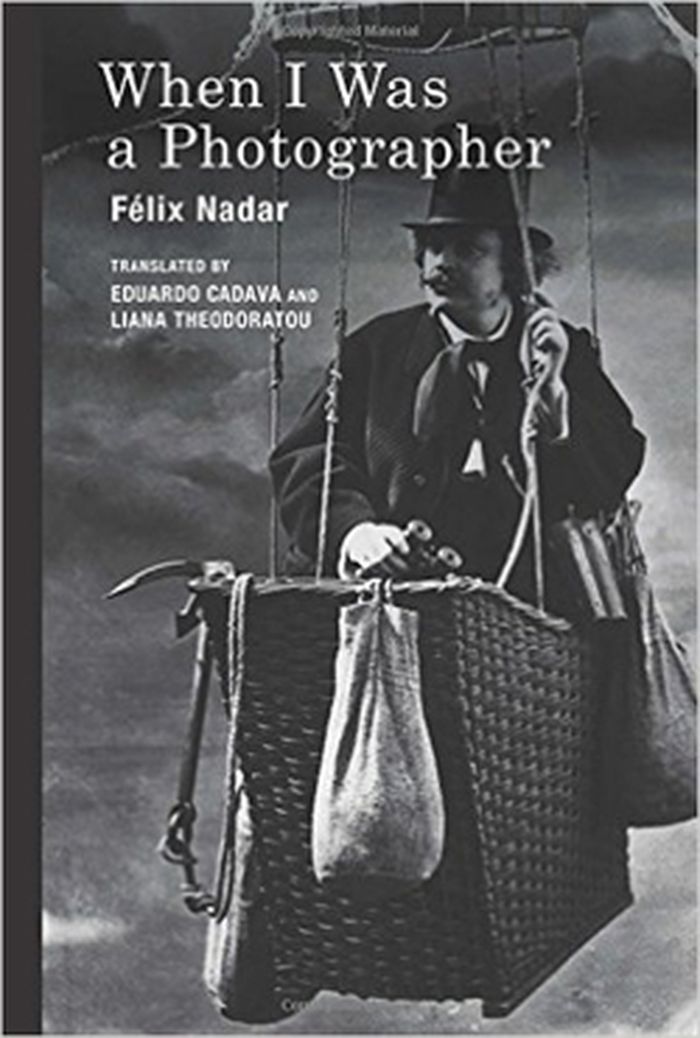On things as ideas
$32.50
(disponible sur commande)
Résumé:
This collection of more than thirty texts, which were originally published between 1790 and the present day, explores man’s rich relationship with material things. Devised largely in response to the gradual breakdown of the divide between art and design that began over a century ago, this book sheds light on the ways that the concept of the thing as idea has been(...)
On things as ideas
Actions:
Prix:
$32.50
(disponible sur commande)
Résumé:
This collection of more than thirty texts, which were originally published between 1790 and the present day, explores man’s rich relationship with material things. Devised largely in response to the gradual breakdown of the divide between art and design that began over a century ago, this book sheds light on the ways that the concept of the thing as idea has been considered over time. Writers from different fields explore how things interact with materials, structures, and production processes while defining and registering the intangible qualities of the material world. Each author considers the different relationships between the context of a thing and its thingness, describing the ways in which things and ideas intersect. Contributions by Carl Andre, Charles Baudelaire, Walter Benjamin, Barbara Bloemink, Jan Boelen, Louise Bourgeois, Sheldon Cheney and Martha Candler Cheney, Alex Coles, Anthony Dunne and Fiona Raby, Hal Foster, Sigmund Freud, Dan Graham, Isabelle Graw, Sebastian Hackenschmidt and Dietmar Rübel, Graham Harman, G. W. F. Hegel, Martin Heidegger, Dave Hickey, Matthew Higgs, Donald Judd, Immanuel Kant, Frederick J. Kiesler, Sven Lütticken, Alessandro Mendini, W. J. T. Mitchell, Jasper Morrison, Bruno Munari, Robert Nickas, Alice Rawsthorn, Jeff Rian, Richard Rinehart, Anthony Vidler.
Théorie du design
$49.50
(disponible sur commande)
Résumé:
Parce qu'on la croit inscrite dans la ville et qu'elle semble apparaître comme une conséquence évidente de ses tracés mêmes (trottoirs, jardins, passages protégés, etc.), la promenade est aujourd'hui conçue comme une pratique ordinaire, normale et convenue. Le promeneur arpente le pavé de Paris. Il trouve plaisir et santé à user ses semelles sur ces dalles qui, dit-on, ne(...)
Le promeneur à Paris au XVIIIe siècle
Actions:
Prix:
$49.50
(disponible sur commande)
Résumé:
Parce qu'on la croit inscrite dans la ville et qu'elle semble apparaître comme une conséquence évidente de ses tracés mêmes (trottoirs, jardins, passages protégés, etc.), la promenade est aujourd'hui conçue comme une pratique ordinaire, normale et convenue. Le promeneur arpente le pavé de Paris. Il trouve plaisir et santé à user ses semelles sur ces dalles qui, dit-on, ne sont faites que pour marcher. Pourtant, se promener dans la ville est un comportement historiquement construit, la cité ne s'est pas toujours offerte au flâneur. Il importe de comprendre comment, chez l'être urbain, ce sentiment a pu se constituer et comment la ville a permis de maintenir cette habitude par des promenades publiques et des espaces protégés pour le piéton. Se dessine alors une habitude qui encourage l'individu à déambuler, à se mettre en marche, parfois en scène, à entrer dans le grand bal des sociabilités parisiennes. Une identité se construit, avec ses comportements, ses manières d'être, ses regards et sa gestuelle. Le promeneur s'avance, il prend place dans le Paris du XVIIIe siècle, précédant la figure emblématique du siècle suivant, chère à Walter Benjamin : il devient une figure qui définit la capitale française à l'époque moderne.
Histoire jusqu’à 1900
$70.00
(disponible sur commande)
Résumé:
Maurice R. Stein and Larry Miller’s 'Blueprint for Counter Education' is one of the defining (but neglected) works of radical pedagogy of the Vietnam War era. Originally published as a boxed set by Doubleday in 1970, the book was accompanied by large graphic posters that could serve as a portable learning environment for a new process-based model of education, and a(...)
Blueprint for counter education
Actions:
Prix:
$70.00
(disponible sur commande)
Résumé:
Maurice R. Stein and Larry Miller’s 'Blueprint for Counter Education' is one of the defining (but neglected) works of radical pedagogy of the Vietnam War era. Originally published as a boxed set by Doubleday in 1970, the book was accompanied by large graphic posters that could serve as a portable learning environment for a new process-based model of education, and a bibliography and checklist that map patterns and relationships between radical thought and artistic practices—from the modernist avant-gardes to postmodernism, from the Bauhaus to Black Mountain College, from Theodor Adorno and Walter Benjamin to Buckminster Fuller and Norman O. Brown—with Herbert Marcuse and Marshall McLuhan serving as points of anchorage. 'Blueprint for Counter Education' thus serves as a vital synthesis of the numerous intellectual currents in the countercultural debate on the radical reform of schools, universities and ways of learning. To accompany this new facsimile edition of the book and posters, an 80-page booklet features a conversation with the original Blueprint creators, Maurice R. Stein, Larry Miller and designer Marshall Henrichs, as well as essays from Jeffrey Schnapp, Paul Cronin and notes on the design by Adam Michaels of Project Projects.
Muséologie
Architecture and abstraction
$45.95
(disponible en magasin)
Résumé:
In this theoretical study of abstraction in architecture—the first of its kind—Pier Vittorio Aureli argues for a reconsideration of abstraction, its meanings, and its sources. Although architects have typically interpreted abstraction in formal terms—the purposeful reduction of the complexities of design to its essentials—Aureli shows that abstraction instead arises from(...)
Architecture and abstraction
Actions:
Prix:
$45.95
(disponible en magasin)
Résumé:
In this theoretical study of abstraction in architecture—the first of its kind—Pier Vittorio Aureli argues for a reconsideration of abstraction, its meanings, and its sources. Although architects have typically interpreted abstraction in formal terms—the purposeful reduction of the complexities of design to its essentials—Aureli shows that abstraction instead arises from the material conditions of building production. In a lively study informed by Walter Benjamin, Karl Marx, Alfred Sohn-Rethel, and other social theorists, Architecture and Abstraction presents abstraction in architecture not as an aesthetic tendency but as a movement that arises from modern divisions of labor and consequent social asymmetries. These divisions were anticipated by the architecture of antiquity, which established a distinction between manual and intellectual labor, and placed the former in service to the latter. Further abstractions arose as geometry, used for measuring territories, became the intermediary between land and money and eventually produced the logic of the grid. In our own time, architectural abstraction serves the logic of capitalism and embraces the premise that all things can be exchanged—even experience itself is a commodity. To resist this turn, Aureli seeks a critique of architecture that begins not by scaling philosophical heights, but by standing at the ground level of material practice.
Théorie de l’architecture
$41.95
(disponible en magasin)
Résumé:
Renowned philosopher Susan Buck-Morss collaborates with Kevin McCaughey of Boot Boyz Biz and Adam Michaels of Inventory Press on this experimental image-text renewal of McLuhan, Berger and Benjamin. "Seeing <—> Making: Room for thought" both studies and presents the creative process of constructing ideas with images. By activating the techniques of montage and analogy,(...)
Théorie du design
janvier 2024
Seeing <—> Making: Room for thought
Actions:
Prix:
$41.95
(disponible en magasin)
Résumé:
Renowned philosopher Susan Buck-Morss collaborates with Kevin McCaughey of Boot Boyz Biz and Adam Michaels of Inventory Press on this experimental image-text renewal of McLuhan, Berger and Benjamin. "Seeing <—> Making: Room for thought" both studies and presents the creative process of constructing ideas with images. By activating the techniques of montage and analogy, the book reveals a wide field of view and a space to engage new critical connections between a multiplicity of objects from the past and present. Realized through an intergenerational collaboration of three cultural producers committed to making theory visible, a transformative anthology of critical essays by Susan Buck-Morss anchors this kaleidoscopic project. Images and ideas sync with Buck-Morss’ perceptive texts on visual culture, history, politics and aesthetics, fusing criticism with visual play and linking collective imagination and social action. In both design and content, "Seeing <—> Making: Room for thought" builds upon the dynamic sensorium of Marshall McLuhan and Quentin Fiore's book "The medium is the massage", Walter Benjamin's "Arcades" Project and John Berger's "Ways of seeing". This innovative volume brings Buck-Morss’ more experimental, visually engaged work to the fore in a way that has not been available in the usual contexts within which her writing has appeared.
Théorie du design
L'empire du kitsch
$43.95
(disponible sur commande)
Résumé:
" Art et littérature populaires et commerciaux faits de chromos, de couvertures de magazines, d'illustrations, d'images publicitaires, de littérature à bon marché, de bandes dessinées, de musique de bastringue, de danse à claquettes, de films hollywoodiens, etc. ". C'est ainsi que Clement Greenberg définissait le kitsch. Suffit-il pour autant de dénigrer le kitsch, de le(...)
L'empire du kitsch
Actions:
Prix:
$43.95
(disponible sur commande)
Résumé:
" Art et littérature populaires et commerciaux faits de chromos, de couvertures de magazines, d'illustrations, d'images publicitaires, de littérature à bon marché, de bandes dessinées, de musique de bastringue, de danse à claquettes, de films hollywoodiens, etc. ". C'est ainsi que Clement Greenberg définissait le kitsch. Suffit-il pour autant de dénigrer le kitsch, de le vilipender pour le rendre détestable aux yeux de celui qui, selon l'expression d'Hermann Broch, aime à le " produire " et à le " consommer " quel qu'en soit le prix ? Certes non, car rien, à l'heure où triomphent le libéralisme libertaire et l'individualisme postmoderne, n'est en mesure de freiner son expansion et d'atténuer sa puissance séductrice. Et c'est bien cette offensive que Valérie Arrault tente de démasquer. Subtilement, elle analyse avec humour les rapports parfois ambigus, d'attraction et de répulsion mêlées, qu'exercent le phénomène Las Vegas, le richissime objet transitionnel qu'est la poupée Barbie et Disneyland, ce monde féerique et fantasmatique de Mickey dans lequel, comme le notait déjà Walter Benjamin, l'homme d'aujourd'hui est assuré de ne vivre aucune véritable expérience esthétique et intellectuelle. Mieux encore : l'art contemporain le plus actuel se fait kitsch, comme le montrent les oeuvres et les actions de Jeff Koons ou de Pierre et Gilles, attestant la puissance hégémonique du phénomène et signant ainsi sa victoire planétaire.
Théorie de l’architecture
livres
Description:
7 volumes in 8 : illustrations, maps ; 24 cm
Cambridge [England] ; New York, NY, USA : Cambridge University Press, 1995-2005.
The New Cambridge medieval history.
Actions:
Exemplaires:
Description:
7 volumes in 8 : illustrations, maps ; 24 cm
livres
Cambridge [England] ; New York, NY, USA : Cambridge University Press, 1995-2005.
$39.95
(disponible sur commande)
Résumé:
An epic project in both size and purview, Peter Sloterdijk's three-volume, 2,500-page Spheres is the late-twentieth-century bookend to Heidegger's Being and Time. Rejecting the century's predominant philosophical focus on temporality, Sloterdijk, a self-described "student of the air," reinterprets the history of Western metaphysics as an inherently spatial and(...)
Spheres1 : Bubbles, microspherology
Actions:
Prix:
$39.95
(disponible sur commande)
Résumé:
An epic project in both size and purview, Peter Sloterdijk's three-volume, 2,500-page Spheres is the late-twentieth-century bookend to Heidegger's Being and Time. Rejecting the century's predominant philosophical focus on temporality, Sloterdijk, a self-described "student of the air," reinterprets the history of Western metaphysics as an inherently spatial and immunological project, from the discovery of self (bubble) to the exploration of world (globe) to the poetics of plurality (foam). Exploring macro- and micro-space from the Greek agora to the contemporary urban apartment, Sloterdijk is able to synthesize, with immense erudition, the spatial theories of Aristotle, René Descartes, Gaston Bachelard, Walter Benjamin, and Georges Bataille into a morphology of shared, or multipolar, dwelling - identifying the question of being as one bound up with the aerial technology of architectonics and anthropogenesis. Sloterdijk describes Bubbles, the first volume of Spheres, as a general theory of the structures that allow couplings - or as the book's original intended subtitle put it, an "archeology of the intimate." Bubbles includes a wide array of images, not to illustrate Sloterdijk's discourse, but to offer a spatial and visual "parallel narrative" to his exploration of bubbles. Written over the course of a decade, the Spheres trilogy has waited another decade for its much-anticipated English translation from Semiotext(e). Volumes II, Globes, and III, Foam, will be published in the coming seasons.
Théorie/ philosophie
When I was a photographer
$32.95
(disponible sur commande)
Résumé:
Celebrated nineteenth-century photographer—and writer, actor, caricaturist, inventor, and balloonist—Félix Nadar published this memoir of his photographic life in 1900 at the age of eighty. Composed as a series of vignettes (we might view them as a series of “written photographs”), this intelligent and witty book offers stories of Nadar’s experiences in the early years of(...)
When I was a photographer
Actions:
Prix:
$32.95
(disponible sur commande)
Résumé:
Celebrated nineteenth-century photographer—and writer, actor, caricaturist, inventor, and balloonist—Félix Nadar published this memoir of his photographic life in 1900 at the age of eighty. Composed as a series of vignettes (we might view them as a series of “written photographs”), this intelligent and witty book offers stories of Nadar’s experiences in the early years of photography, memorable character sketches, and meditations on history. It is a classic work, cited by writers from Walter Benjamin to Rosalind Krauss. This is its first and only complete English translation. In When I Was a Photographer, Nadar tells us about his descent into the sewers and catacombs of Paris, where he experimented with the use of artificial lighting, and his ascent into the skies over Paris in a hot air balloon, from which he took the first aerial photographs. He recounts his “postal photography” during the 1870-1871 Siege of Paris—an amazing scheme involving micrographic images and carrier pigeons. He describes technical innovations and important figures in photography, and offers a thoughtful consideration of society and culture; but he also writes entertainingly about such matters as Balzac’s terror of being photographed, the impact of a photograph on a celebrated murder case, and the difference between male and female clients. Nadar’s memoir captures, as surely as his photographs, traces of a vanished era.
Théorie de la photographie
livres
$43.95
(disponible sur commande)
Résumé:
This third volume in the Chora series continues to explore diverse historical and critical issues in architecture. Attempting to discover architectural alternatives based on concepts of aesthetics, technology, or sociology, the contributors offer refreshing interdisciplinary explorations of architectural tradition. The thirteen essays in(...)
Théorie de l’architecture
février 1999, Montréal
Chora 3 : intervals in the philosophy of architecture
Actions:
Prix:
$43.95
(disponible sur commande)
Résumé:
This third volume in the Chora series continues to explore diverse historical and critical issues in architecture. Attempting to discover architectural alternatives based on concepts of aesthetics, technology, or sociology, the contributors offer refreshing interdisciplinary explorations of architectural tradition. The thirteen essays in this collection include historical subjects as well as speculative theoretical "projects" that blur conventional boundaries between history and fiction. Ricardo Castro provides an original reading of the Kogi culture in Colombia; Maria Karvouni explores philological and architectonic connections between the Greek demas (the political individual) and domus (the house); Mark Rozahegy speculates on relationships between architecture and memory; Myriam Blais discusses technical inventions by sixteenth-century French architect Philibert de l'Orme; Alberto Pérez-Gómez examines the late sixteenth-century reconstruction of the Temple of Jerusalem by Juan Bautista Villalpando; Janine Debanné offers a new perspective on Guarino Guarini's Chapel of the Holy Shroud in Turin; Katja Grillner examines the early seventeenth-century writings of Salomon de Caus and his built work in Heidelberg; David Winterton reflects on Charles-François Viel's "Letters"; Franca Trubiano looks at Jean-Jacques Lequeu's controversial Civil Architecture; Henrik Reeh considers the work of Sigfried Kracauer, a disciple of Walter Benjamin; Irena Zantovská Murray reflects on work by artist Jana Sterbak; artist Ellen Zweig presents a textual project that demonstrates the charged poetic space created by film makers such as Antonioni and Hitchcock; and Swedish writer and architect Sören Thurell asks a riddle about architecture and its mimetic origins.
livres
février 1999, Montréal
Théorie de l’architecture
